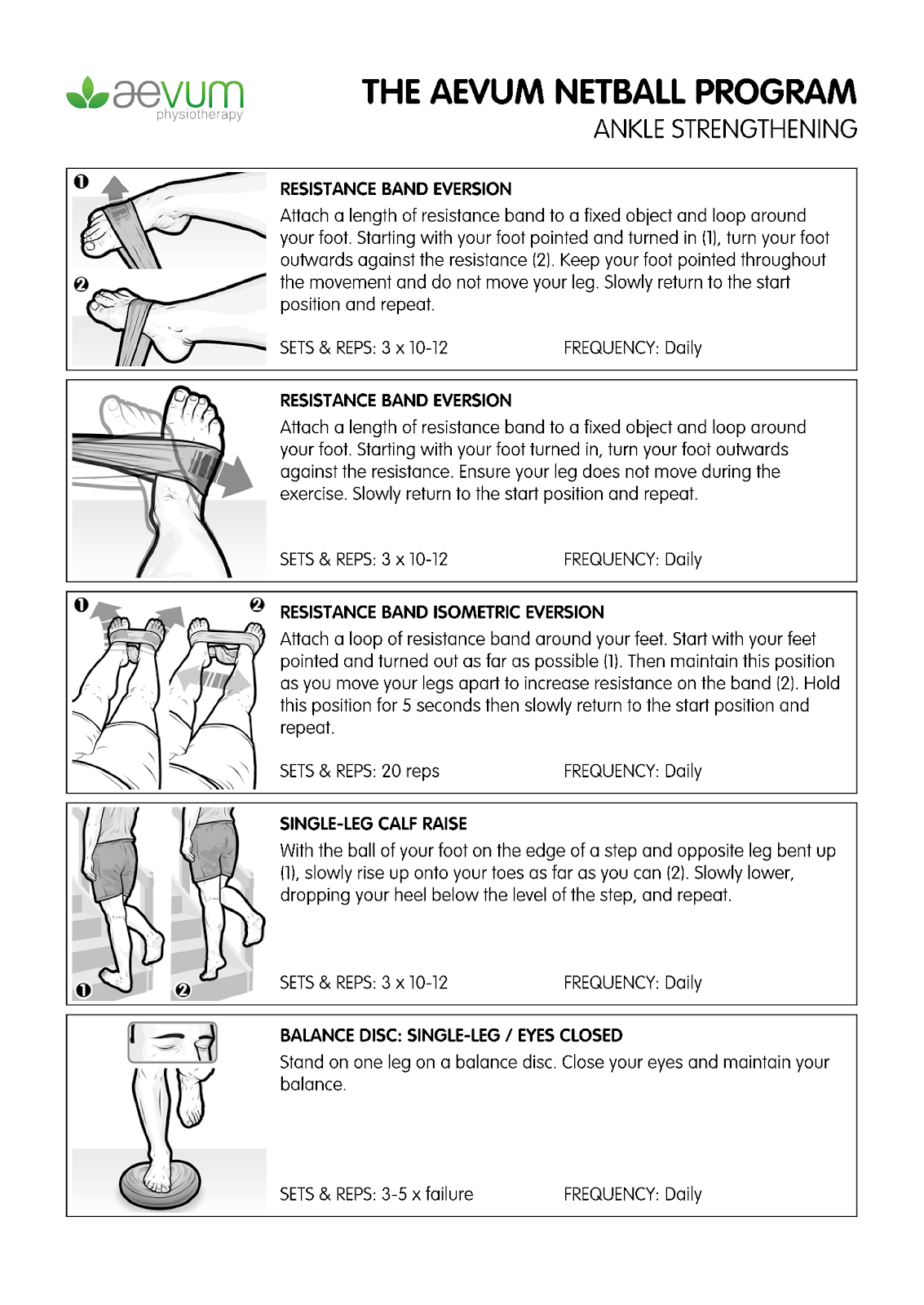Why Are Ankle Sprains So Common Among Netball Players in the Sutherland Shire?
Netball is a physically demanding, fast-paced sport that needs agility, coordination, and quick reflexes. It's no surprise that players are frequently injured, but one of the most prevalent ailments among netball players is an ankle sprain. In fact, ankle sprains are so common among Sutherland Shire netball players that many are forced to miss games to heal. In this article Aevum Health will:
Explain the factors that influence ankle sprains
Talk about how they may be prevented
Provide an ankle-strengthening program for netball players
So, what exactly is an ankle sprain, and why do they occur so frequently in netball players? When the ligaments that support the ankle are stretched or ripped, this results in an ankle sprain. Typically, this type of injury is caused by a quick twist or spin, or by landing awkwardly after jumping.
Factors Influencing Ankle Sprains in Netball Players
A number of variables contribute to the high risk of ankle sprains among Sutherland Shire netball players. These are some examples:
Inadequate warm-up and stretching: Beginning a game without first adequately warming up and stretching the muscles increases the chance of injury.
Inadequate footwear: Wearing shoes that do not provide appropriate support or that do not fit properly increases the risk of ankle sprains.
Playing surface: Playing on an uneven or slippery surface increases the chance of injury.
Overuse: Playing netball regularly without allowing the body appropriate rest and recovery time can result in overuse problems.
Prior injury: Athletes who have previously sustained an ankle sprain are more likely to re-injure.
How can our Sutherland Shire Netball Players help prevent injury?
There are various precautions you may take as a Sutherland Shire netball player to lessen your risk of ankle sprains. They include:
- Properly warming up and stretching before each game; and
- Wearing shoes that fit properly and give enough support for your feet and ankles.
- Avoid playing on uneven or slippery surfaces.
- Provide your body ample rest and recovery time between games. If you've had an ankle sprain in the past, take extra precautions to avoid re-injury and make sure to follow your Physio’s guide to strengthen your ankles again.
Frequently Asked Questions About Ankle Sprains in Netball Players
The following are some of the most often asked questions about ankle sprains in netball players:
Q. How long does it take to recover from a sprained ankle?
The time it takes to heal from an ankle sprain depends on the degree of the injury. In most situations, full recovery takes anywhere from a few days to several weeks.
Q. Can you play netball if you have an ankle sprain?
Absolutely, an ankle sprain can keep you from playing netball, especially if the injury is serious. In some situations, players may need to miss games to allow their ankle to heal correctly.
Q. How can I avoid ankle sprains while playing netball?
You can reduce your risk of ankle sprains by properly warming up and stretching before each game, wearing shoes that fit properly and provide adequate support, avoiding playing on uneven or slippery surfaces, allowing your body adequate rest and recovery time between games, and exercising extra caution if you've previously suffered an ankle sprain.
Conclusion
Ankle sprains are the most prevalent injury among Sutherland Shire netball players, and they are caused by abrupt changes of direction, uncomfortable landings, stepping on an uneven surface, and weak ankles. Netball players can lower their risk of ankle sprains by performing strengthening exercises, wearing suitable footwear, stretching, and warming up. If an ankle sprain occurs, it is critical to have a consultation with your Physiotherapist and adhere to a rehabilitation program to ensure appropriate recovery and reduce the risk of long-term complications, like the one provided below.
Contact the team at Aevum Health to see how we can help you with netball ankle injuries.

